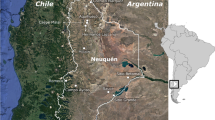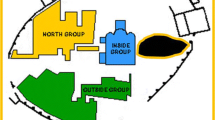Abstract
Although numerous bodies were deposited in Western European bogs in the past centuries, few were found and underwent archeological analysis. No studies comparing skeletal structure and mineralization of bog bodies from different ages have been performed to this day. Therefore, the aim of this study was to analyze and compare skeletal features and specifics of the human remains of three bog bodies from the Iron and Middle Ages found in Northern European peat bogs. Demineralization due to the acidic environment in peat bogs was comparably pronounced in all three bodies. Still, the macroscopic state of skeletal preservation was excellent. In addition to contact radiography, we used peripheral quantitative computed tomography to measure cortical bone mineral density. The conservation of skeletal three-dimensional microstructural elements was assessed by high-resolution microcomputed tomography analysis. These techniques revealed severe differences in bone mineral density and enabled us to determine handedness in all three bodies. Additionally, unique skeletal features like intravital bone lesions, immobilization osteoporosis, and Harris lines were found. A deformity of the left femoral head was observed which had the typical appearance of an advanced stage of Legg–Calve–Perthes disease. This study gives detailed insight into the skeletal microstructure and microarchitecture of 800- to 2,700-year-old bog bodies. Skeletal analysis enables us to draw conclusions not only concerning changes in the acidic environment of the bog, but also serves as a diagnostic tool to unravel life circumstances and diseases suffered by humans in the Iron and Middle Ages.





Similar content being viewed by others
Reference
Bauerochse A, Metzler A, Bartelt U, Scheschkewitz J (2005) Das Mädchen aus dem Uchter Moor. Archäol Dtschl 5:34–36
Chin KR, Kharrazi FD, Miller BS, Mankin HJ, Gebhardt MC (2000) Osteochondromas of the distal aspect of the tibia or fibula. Natural history and treatment. J Bone Joint Surg Am 82(9):1269–1278
Doran GH, Dickel DN, Ballinger WE Jr, Agee OF, Laipis PJ, Hauswirth WW (1986) Anatomical, cellular and molecular analysis of 8,000-yr-old human brain tissue from the Windover archaeological site. Nature 323(30):803–806
Erler K, Oguz E, Komurcu M, Atesalp S, Basbozkurt M (2003) Ankle swelling in a 6-year-old boy with unusual presentation: report of a rare case. J Foot Ankle Surg 42(4):235–239
Glogowski G (1962) Die Pathophysiologie des oberen Femurendes. Beih Z Orthop 95:1–61
Gumustekin K, Akar S, Dane S, Yildirim M, Seven B, Varoglu E (2004) Handedness and bilateral femoral bone densities in men and women. Int J Neurosci 114:1533–1547
Haas-Gebhard B, Pueschel K (2009) Die Frau aus dem Moor—Teil 1. Neue Untersuchungsergebnisse an der Moorleiche aus dem Weiten Filz bei Peiting (Oberbayern). Bayerische Vorgeschichtsblätter. C.H. Beck-Verlag, München, 74:239–269
Hughes MA, Jones DS, Connolly RC (1986) Body in the bog but no DNA. Nature 323(6085):208
Hughes C, Heylings DJ, Power C (1996) Transverse (Harris) lines in Irish archaeological remains. Am J Phys Anthropol 101:115–131
Jansson AF, Müller TH, Gliera L, Ankerst DP, Wintergerst U, Belohradsky BH, Jansson V (2009) Clinical score for nonbacterial osteitis in children and adults. Arthritis Rheum 60(4):1152–1159
Jopp E, Pueschel K, Amling M, Schilling AF, Helmke K, Kahler A, Bauerochse A (2006) Antropologie und Archäologie-“Mooras” Harris-Linien- ein besonderer Befund? Berichte zur Denkmalpflege in Niederrsachsen. Rechtsmedizin 2:38–39
Kandzierski G (2004) Remarks on the etiology and pathogenesis of Perthes disease: an experiment-based hypothesis. Ortop Traumatol Rehabil 6(5):553–560
Kandzierski G, Karski T, Czerny K, Kisiel J, Kalakucki J (2006) In-vitro mechanical impacts on calves’ proximal femurs: significance of mechanical weakening of the femoral head in the etiology of Perthes disease in children. J Pediatr Orthop B 15(2):120–125
Kemp HS, Boldero JL (1966) Radiological changes in Perthes’ disease. Br J Radiol 39(466):744–760
Kim HT, Wenger DR (1997) Functional retroversion of the femoral head in Legg–Calvé–Perthes disease and epiphyseal dysplasia: analysis of head-neck deformity and its effect on limb position using three-dimensional computed tomography. J Pediatr Orthop 17(2):240–246
Lawlor DA, Dickel CD, Hauswirth WW, Parham P (1991) Ancient HLA genes from 7,500-year-old archaeological remains. Nature 349:785–788
Lynnerup N (2007) Mummies. Am J Phys Anthropol 134(Suppl 45):162–190
Lynnerup N (2009) Medical imaging of mummies and bog bodies. Gerontology. doi:10.1159/000266031
Mihara K, Hirano T (1998) Standing is a causative factor in osteonecrosis of the femoral head in growing rats. J Pediatr Orthop 18:665–669
Neu CM, Manz F, Rauch F, Merkel A, Schoenau E (2001) Bone densities and bone size at the distal radius in healthy children and adolescents: a study using peripheral quantitative computed tomography. Bone 28(2):227–232
Nikander R, Sievanen H, Uusi-Rasi K, Heinonen A, Kannus P (2006) Loading modalities and bone structures at non-weight-bearing upper extremity and weight-bearing lower extremity: a pQCT study of adult female athletes. Bone 39:886–894
Pueschel K, Bauerochse A, Fuhrmann A, Hummel S, Jopp E, Kettner A, Lockemann U, Metzler A, Schmid D, Schmidt KD (2005) Rechtsmedizin, Anthropologie und Archäologie—Ein “vermisstes” Mädchen entpuppt sich als über 2700 Jahre alte Moorleiche. Rechtsmedizin 15:202–205
Pyatt FB, Beaumont EH, Buckland PC, Lacy D, Storm EE (1991) An examination of the mobilisation of elements from the skin and bone of the bog body Lindow II and a comparison with Lindow II. Environ Geochem Health 13:153–159
Schilling AF, Kummer T, Marshall RP, Bauerochse A, Jopp E, Pueschel K, Amling M (2007) Brief communication: two and three-dimensional analysis of bone mass and microstructure in a bog body from the Iron Age. Am J Phys Anthropol 135(4):479–483
Schlabow K (1983) Der Moorleichenfund von Peiting. Veröffentlichungen des Fördervereins Textilmuseum Neumünster. Karl Wacholtz, Neumünster
Stead IM, Bourke JB, Brousse N (1986) Lindow man, the body in the bog. British Museum Publications, London
Stücker M, Bechara FG, Bacharach-Buhles M, Pieper P, Altmeyer P (2001) What remains of the skin after 2000 years in a bog? Hautarzt 52(4):316–321
Suehiro M, Hirano T, Shindo H (2005) Osteonecrosis induced by standing in growing Wistar Kyoto rats. J Orthop Sci 10:501–507
Tauber H (1956) Copenhagen natural radiocarbon measurements II. Science 124(3227):879--881
Van der Pflicht J, Van der Sanden WAB, Aerts AT, Streurman HJ (2004) Dating bog bodies by means of 14C-AMS. J Archaeol Sci 31:471–491
Van der Sanden WAB (1996) Through nature to eternity-the bog bodies of Northwest Europe. Batavian Lion International, Amsterdam
Ward KA, Roberts SA, Adams JE, Mughal MZ (2005) Bone geometry and density in the skeleton of pre-pubertal gymnasts and school children. Bone 36:1012–1018
Acknowledgements
We would like to express our gratitude to the museums and their curators who provided the bog bodies for our research. We would also like to thank S. Kappelhoff for her assistance during the radiological analysis of “BB 2009.”
Ethical standards
The experiments performed in this study comply with current German laws.
Conflict of interest
The authors declare that they have no conflict of interest.
Author information
Authors and Affiliations
Corresponding author
Additional information
Jan M. Pestka and Florian Barvencik contributed equally to this study.
Rights and permissions
About this article
Cite this article
Pestka, J.M., Barvencik, F., Beil, F.T. et al. Skeletal analysis and comparison of bog bodies from Northern European peat bogs. Naturwissenschaften 97, 393–402 (2010). https://doi.org/10.1007/s00114-010-0653-3
Received:
Revised:
Accepted:
Published:
Issue Date:
DOI: https://doi.org/10.1007/s00114-010-0653-3




